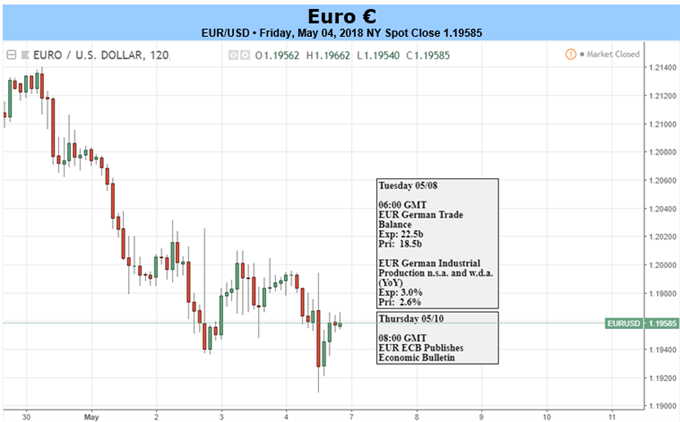
Talking Points:
Fundamental Forecast for the Euro: Neutral
It was another rough week for the Euro as sellers remained in control against most major currencies. The notable exception being the British Pound, as GBP remains in the midst of an aggressive reversal ahead of next week’s BoE meeting. The Euro has been in a bearish state since mid-April, and those declines hastened around the ECB meeting later in the month when the European Central Bank took a dovish outlook to markets in the face of falling rates of inflation. That theme caught another push this week with the release of EURUSD Eases as Euro-Zone Inflation Data Miss Expectations. This printed in a rather disappointing fashion, coming in at 1.2% on the headline number, compared to the 1.3% expectation and prior month’s print; while Core CPI came in at .7%, well-below the .9% expectation and the 1% print from last month.
EURO-ZONE CORE INFLATION FALLS TO LOWEST LEVELS IN OVER A YEAR

prepared by James Stanley
Collectively, these falling rates of inflation make for a more complicated backdrop around a Central Bank that’s looking to exit from a massive stimulus program. While growth and inflation remained strong and steady in 2017, that slowing backdrop with inflation falling further away from target may spell trouble for Euro bulls in the near-term.
At the press conference for the April ECB meeting, ECB President Mario Draghi made the comment that while inflation was expected to rise, data had yet to show ‘convincing signs of a sustained upward trend’. This week’s inflation print echoes that sentiment, and with the current QE program set to expire in September, the ECB is running out of time if they actually want to begin plotting a stimulus exit.
We have two more ECB meetings until that September rate decision, which means that data would likely need to show a significant jump to compel the bank to start tightening policy. Looking away from inflation and towards leading indicators, the picture isn’t all that positive. Released earlier this morning was Eurozone PMI Confirms Cooling Growth; EURUSD Weakness Set to Continue, and this was released at the lowest level since January of 2017. While the indicator printed at 55.1 versus an expectation of 55.2, with any value over 50 indicating expansion; the fact that we’re seeing leading indicators continuing to show a softening or slower backdrop means that we now have a higher probability of QE being extended beyond the program’s current September, 2018 end date.













Leave A Comment